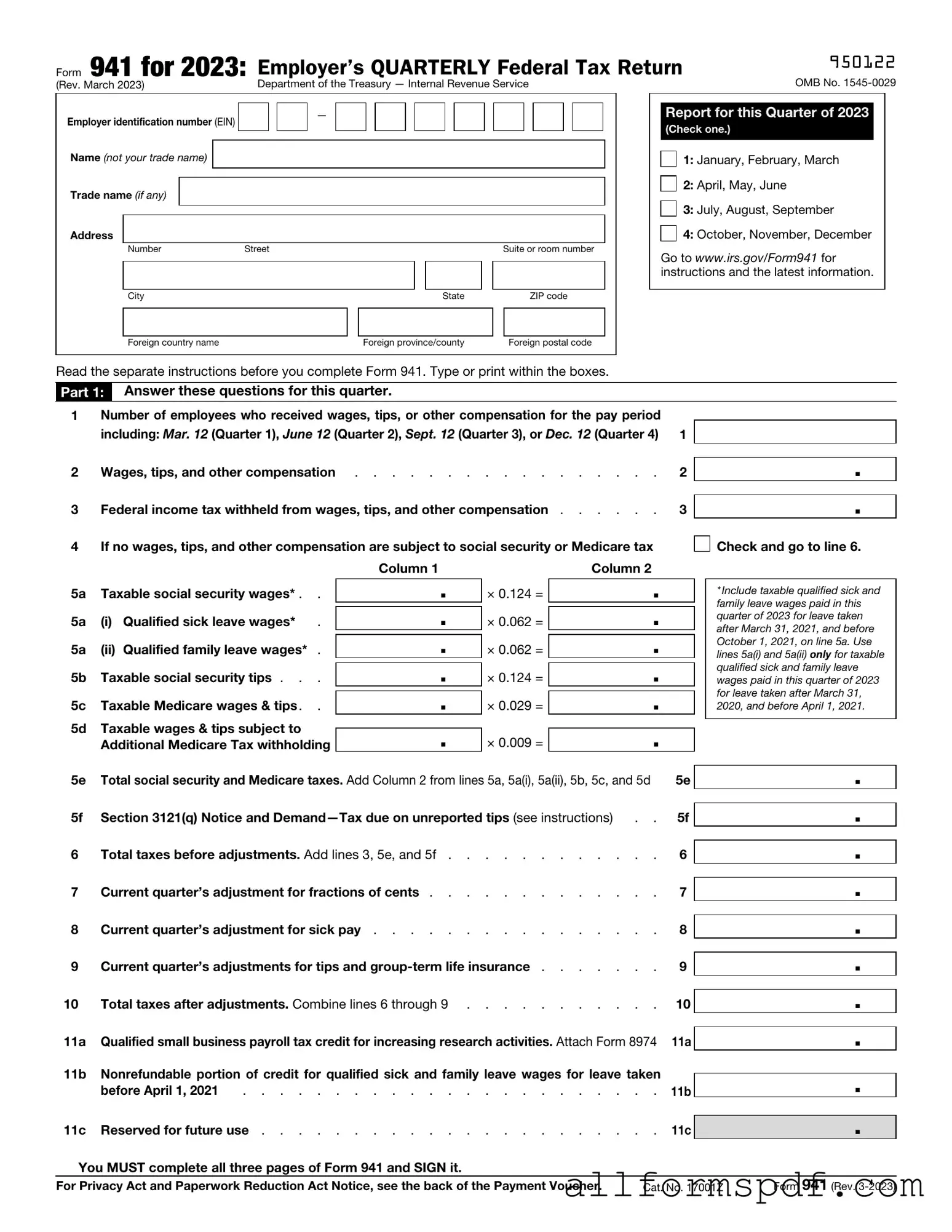Fill Out Your IRS 941 Form
The IRS Form 941 is a quarterly tax return used by employers to report income taxes, Social Security tax, and Medicare tax withheld from employee wages. This form helps the IRS track the taxes that employers are responsible for remitting on behalf of their employees. Understanding how to accurately complete and submit Form 941 is essential for maintaining compliance and avoiding penalties.
Create My IRS 941 Now
